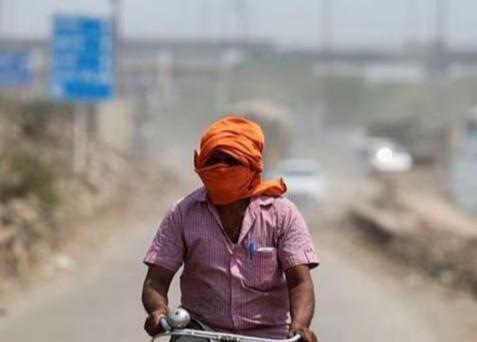
Extreme Heat Endangering Health & Productivity of Workers: Report
As the world grapples with the escalating issue of climate change, a recent report by the World Health Organisation (WHO) and World Meteorological Organisation (WMO) has warned of the alarming consequences of extreme heat on workers’ health and productivity. The report highlights the devastating impact of heatwaves on manual workers, particularly in agriculture, construction sectors, and vulnerable populations in developing countries.
According to the report, worker productivity drops by 2-3% for every degree above 20°C. This means that as temperatures soar, workers’ efficiency and output decrease significantly, leading to a decline in overall productivity. For instance, if the temperature rises to 25°C, worker productivity would drop by 6-9%. This alarming trend has significant implications for businesses, economies, and societies as a whole.
Manual workers in agriculture and construction sectors are particularly at risk due to their exposure to extreme heat. These workers often toil in outdoor conditions, with limited access to shade, air conditioning, or other heat-relief measures. As a result, they are more susceptible to heat-related illnesses, such as heatstroke, dehydration, and kidney dysfunction.
Furthermore, the report highlights the disproportionate impact of extreme heat on vulnerable populations, including children and the elderly in developing countries. These groups often lack access to basic amenities, such as clean water, sanitation, and healthcare, making them more vulnerable to heat-related illnesses.
Heatstroke, in particular, is a significant concern. This life-threatening condition occurs when the body’s temperature regulation system is overwhelmed, causing the body temperature to rise rapidly. If left untreated, heatstroke can lead to severe brain damage, organ failure, and even death.
Dehydration is another critical issue, especially in areas where access to clean water is limited. Heat causes the body to lose water and salts, leading to dehydration, headaches, fatigue, and dizziness. In severe cases, dehydration can cause seizures, coma, and even death.
Kidney dysfunction is another long-term consequence of extreme heat. Prolonged exposure to high temperatures can cause kidney damage, leading to chronic kidney disease. This condition can lead to end-stage renal disease, requiring dialysis or kidney transplantation.
The report emphasizes the need for immediate action to mitigate the effects of extreme heat on workers. Some of the recommended measures include:
- Implementing heat stress prevention programs, including regular breaks, hydration, and heat-relief measures.
- Providing personal protective equipment, such as heat-resistant clothing and hats.
- Encouraging flexible working hours, allowing workers to avoid peak heat hours.
- Improving ventilation and air conditioning in workplaces.
- Conducting regular temperature monitoring and providing training on heat-related illnesses.
The report also highlights the importance of climate change mitigation and adaptation strategies to reduce the frequency and intensity of heatwaves. This includes reducing greenhouse gas emissions, developing early warning systems, and implementing heatwave preparedness plans.
In conclusion, the report by WHO and WMO serves as a stark reminder of the devastating consequences of extreme heat on workers’ health and productivity. It is essential that we take immediate action to protect workers, particularly in vulnerable populations, and develop strategies to mitigate the effects of climate change. By working together, we can prevent heat-related illnesses, ensure worker safety, and build a more resilient future for all.
Source: https://repository.inshorts.com/articles/en/PTI/45d9bd2d-ff57-417c-9e5f-831344bb34b0






